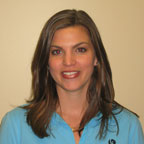We find that parents will do just about anything to protect their child’s health. They serve nutritionally balanced meals, encourage daily exercise and insist on regular dental and eye examinations. Yet many neglect the most important part of the child’s health care program: regular spinal and nervous system checkups. Spinal and nervous system checkups are completed in order to diagnosis a recognized condition known as a subluxation.
A subluxation—a misalignment in the spine—interrupts nerve communication. Many people still associate them with major trauma. They think the spine can be affected only after lifting heavy objects or being in an automobile accident. What they don’t realize is that the daily activities of adults and young children can easily result in subluxations.
How do children get subluxations?
We must first remember how we, the adults, get subluxations—from stress! This stress can be physical, psychological and even chemical. Children are under stress even in utero. Think about it—you are warm and cozy all wrapped up in a blanket in front of your fireplace on a cold winter day. All of a sudden, you find yourself being pulled by your head out the front door of your cozy home, stripped down to nothing, sprayed by a hose and left squinting at the bright sky, all the while wondering what all the noise is out there. This scenario is similar to the birthing process. Warm, dark and quiet—to freezing, bright and loud! Quite a shock to anyone’s system regardless of age! And for those of you who have small children, try counting how many times each day your child falls down. Then think about what would happen to adults if we fell that many times in an entire week! The falls, trips, jumps and more can provide negative stress to their little systems and can lead to subluxations in their spines.
What can we do?
People who understand the importance of spinal checkups bring their children to the chiropractor’s office when they are tiny infants. The most frequent reasons chiropractors currently treat infants and small children are ear infections, colic, digestion, ADD/ADHD, bed wetting, sinus issues and overall wellness checks.
If you have concerns about a child you know, seek an experienced doctor of chiropractic care to answer your questions. tpw
A subluxation—a misalignment in the spine—interrupts nerve communication. Many people still associate them with major trauma. They think the spine can be affected only after lifting heavy objects or being in an automobile accident. What they don’t realize is that the daily activities of adults and young children can easily result in subluxations.
How do children get subluxations?
We must first remember how we, the adults, get subluxations—from stress! This stress can be physical, psychological and even chemical. Children are under stress even in utero. Think about it—you are warm and cozy all wrapped up in a blanket in front of your fireplace on a cold winter day. All of a sudden, you find yourself being pulled by your head out the front door of your cozy home, stripped down to nothing, sprayed by a hose and left squinting at the bright sky, all the while wondering what all the noise is out there. This scenario is similar to the birthing process. Warm, dark and quiet—to freezing, bright and loud! Quite a shock to anyone’s system regardless of age! And for those of you who have small children, try counting how many times each day your child falls down. Then think about what would happen to adults if we fell that many times in an entire week! The falls, trips, jumps and more can provide negative stress to their little systems and can lead to subluxations in their spines.
What can we do?
People who understand the importance of spinal checkups bring their children to the chiropractor’s office when they are tiny infants. The most frequent reasons chiropractors currently treat infants and small children are ear infections, colic, digestion, ADD/ADHD, bed wetting, sinus issues and overall wellness checks.
If you have concerns about a child you know, seek an experienced doctor of chiropractic care to answer your questions. tpw

